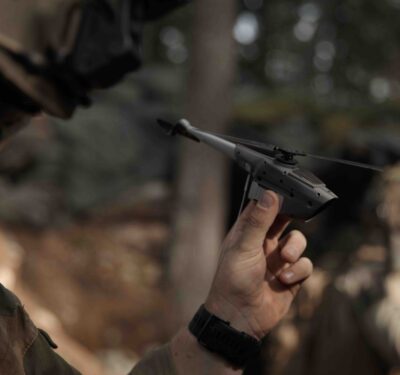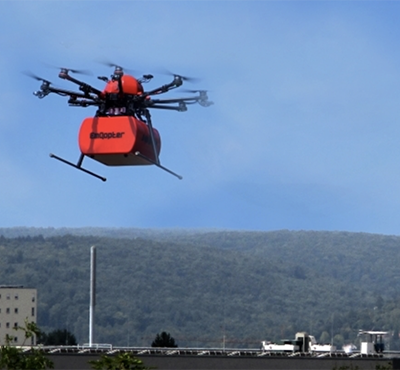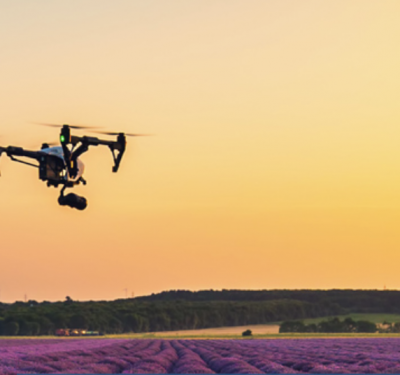
Hybrid Tiger aloft, courtesy NRL.
A long-endurance solar/soaring/fueled UAV, designed and built to demonstrate synergistic range and multi-day endurance benefits through an integrated power management system and optimal autonomous path planning, gave a public demo at the Naval Research Laboratory’s (NRL’s) Aberdeen Proving Grounds, Maryland.
Hybrid Tiger is a Group 2 UAV (typically 21-55 pounds, operate below 3,500 feet AGL at speeds less than 250 knots), 16 kg (34 pounds), 5.7 m (18.7 feet) wingspan autonomous air vehicle that is launched from a tether. It employs two energy-harvesting techniques:
• auto-soaring, autonomously finding and exploiting thermal updrafts to harvest energy from them by rising;
• integrated solar, with unique co-cured solar panel integration process employing high-efficiency photovoltaics, enabling nearly “free” flight during daylight.
The two techniques are backed by an onboard high-pressure hydrogen fuel tank and fuel cell system that provide nighttime power in an integrated power management system. Such overnight endurance has previously been very difficult for tactical vehicles to sustain.
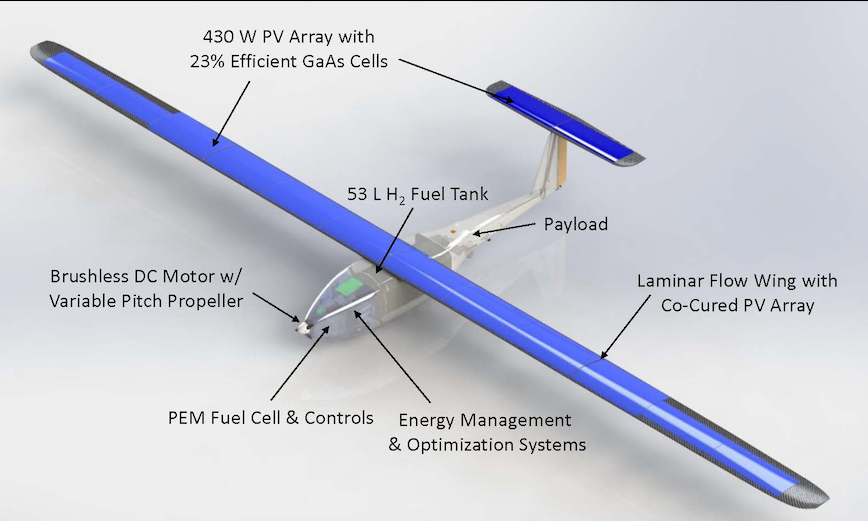
Hybrid Tiger power management system. Courtesy NRL.
This was Hybrid Tiger’s first 24-hour flight. Its NRL forerunner, Ion Tiger, had unofficial flight endurance records of 26 hours (with a gas hydrogen fuel source) and 48 hours (with a liquid hydrogen fuel source).
“Extrapolating the flight endurance of Hybrid Tiger from the recent flight data suggests it can reach the program goal flight endurance,” said Richard Stroman, Ph.D., a mechanical engineer from the NRL Chemistry Division. Flight simulations suggested flight endurances predicted for summer conditions are realistic at lower latitudes and with greater solar energy.
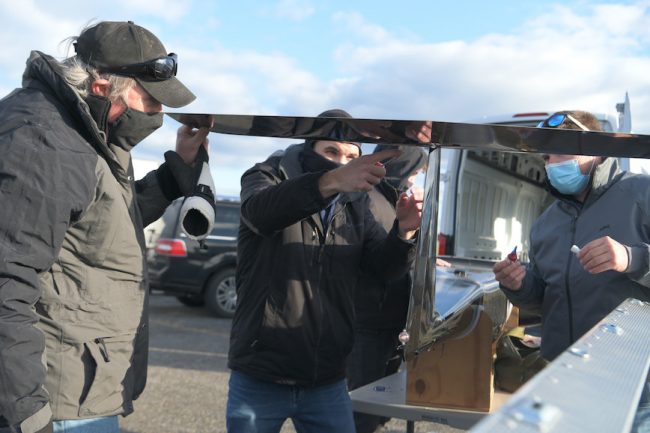
U.S. Naval Research Laboratory aerospace engineers, Mike Schuette, Trent Young, and Sam Carter, prepare the horizontal tail for the Hybrid Tiger Unmanned Aerial Vehicle flight demonstration at Aberdeen Proving Grounds in Maryland, Nov. 18.
“The flight was effectively a performance test in worst-case conditions: temperatures falling below zero degrees Celsius, winds gusting to 20 knots, and relatively little solar energy as we approached the solar solstice Dec. 21,” Stroman said. “Despite all of that, Hybrid Tiger performed well.” The Aberdeen flight demo was conducted on Nov. 18, 2020, but only recently announced by the NRL.
NRL researchers have developed energy-aware power management algorithms, which vary operational modes and generate a vehicle navigation strategy based on weather forecasts and locally observed opportunities for energy harvesting
While Hybrid Tiger was developed for the Department of Defense needs in mind, it shows promise for atmospheric research and commercial applications.
Another flight demonstration is planned for this spring, to reach Hybrid Tiger’s maximum projected endurance of two days.
Hybrid Tiger was developed as a complete system that can be transitioned directly to industry; however, its technologies can also be used individually to improve the performance of other unmanned systems, according to the Lab. NRL is a scientific and engineering command dedicated to research that drives innovative advances for the U.S. Navy and Marine Corps from the seafloor to space and in the information domain. It employs approximately 2,500 civilian scientists, engineers and support personnel.
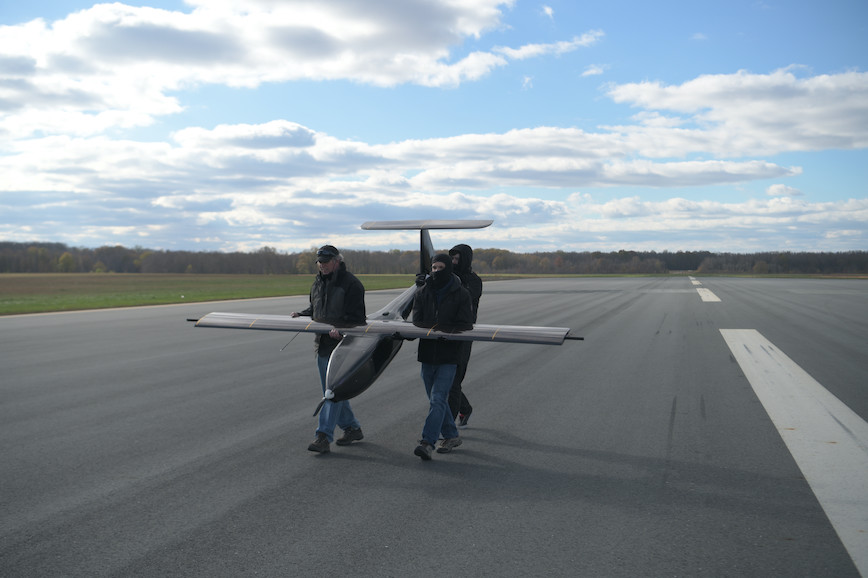
U.S. Naval Research Laboratory aerospace engineers carry Hybrid Tiger to the launch location at Aberdeen Proving Grounds in Maryland, Nov. 18. Courtesy U.S. Naval Research Laboratory.



